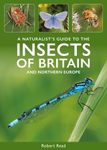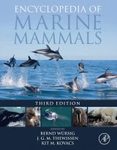![Insect Ecomorphology Insect Ecomorphology]()
Click to have a closer look
About this book
Contents
Customer reviews
Biography
Related titles
About this book
Insect Ecomorphology: Linking Functional Insect Morphology to Ecology and Evolution offers the most up-to-date knowledge and understanding of the morphology of insects and the functional basis of their diversity. This book covers the form and function of insect body structures synthesized with their physiological performance capabilities, biological roles, and evolutionary histories. Written by international experts, this book provides a modern outline of the topic, exploring the ecomorphology of functional systems such as insect feeding, locomotion, sensing, and reproduction. The combination of conceptual and review chapters, methodological approaches, and case studies enables readers to delve into active research fields and attain a general idea of the explanatory power of the form-function-performance paradigm. The book uncovers key structures of the different regions of the insect body, elucidates how they function, and investigates their ecological and evolutionary implications. Insect Ecomorphology: Linking Functional Insect Morphology to Ecology and Evolution is a vital resource for entomologists, biologists, and zoologists, especially those seeking to better understand the morphology and physiological impacts tying insects to environments and evolution.
Contents
1. Introduction to the field of insect ecomorphology
2. Conceptual issues in insect ecomorphology
Part I: Ecomorphology of the insect body
3. Mouthparts
4. Compound eyes
5. Flight
6. Locomotion (terrestrial and aquatic)
7. Tarsal and pretarsal attachment organs
8. Ovipositors
9. Mechano- and chemosensillar
Part II: Methodological approaches
10. Biomechanical approaches to the study of insect morphology
11. Methods for the study of insect behavior in the ecomorphological content
12. Trait-function relationships - Trait-based approaches in ecomorphology
Part III: Case Studies
13. Damselflies
14. Trap-jaw ants
15. Insect-plant interactions
16. Feeding ecology of sap-sucking insects
17. Ants
18. How insect biomimetics can benefit from ecomorphological research
Customer Reviews
Biography
Oliver Betz gained a PhD from the University of Bayreuth, Germany, in 1994 for his work on the morphology, function, and evolution of the prey-capture apparatus in Stenus rove beetles. He then became interested in the broader fields of functional and ecological morphology and qualified in 2002 as a professor in ecology and zoology at the University of Kiel, Germany. Since 2004, Oliver has been a full professor of Evolutionary Biology of Invertebrates at the Biology Department at the University of Tubingen, Baden-Wurttemberg, Germany. His research focuses on the functional and ecological morphology of insects, taking into account the integration of morphology and ecology to improve the understanding of the function of morphological structures in their ecological (environment) and evolutionary (history) context.


































